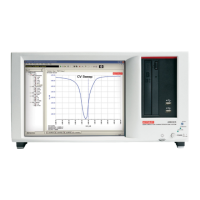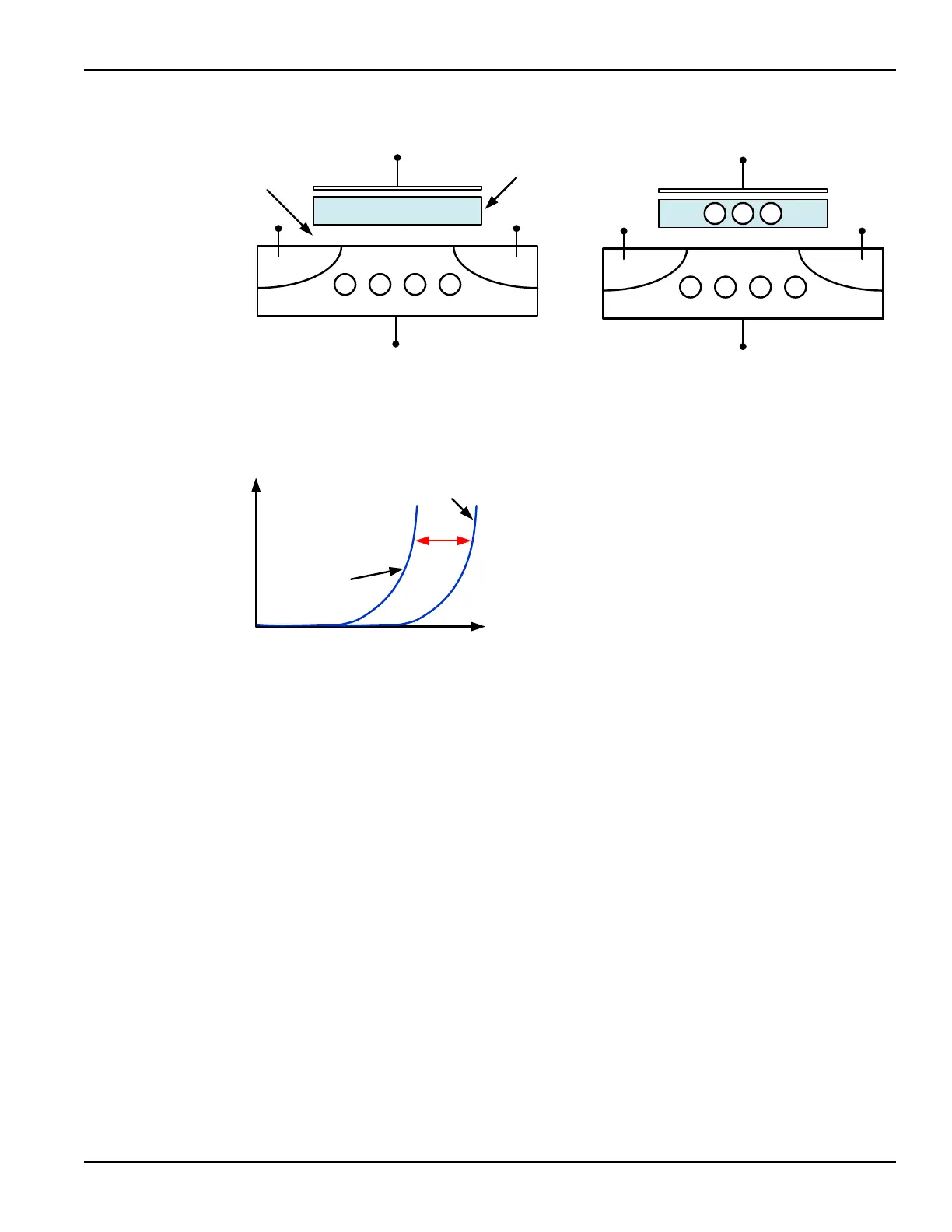4200-900-01 Rev. K / February 2017 Return to Section Topics 3-101
Model 4200-SCS User’s Manual Section 3: Common Device Characterization Tests
Figure 3-80
Cross section of a floating gate transistor in both the erased and programmed states
Figure 3-81
Graph of shifted voltage threshold, V
T
, due to stored charge on floating gate on a 1 bit (2
level) cell
The Flash transistors tests consist of two parts:
1. Pulse waveforms to program or erase the DUT
2. DC measurements are taken to determine the state of the device
This implies switching between two conditions:
1. Pulse resources are connected to the DUT
2. Pulse resources are disconnected and the DC resources are connected to the DUT
The pulses are used to move charge to or from the floating gate. There are
two different methods to move charge:
1. Tunneling
2. Hot electron injection (HEI)
The tunneling method is commonly known as Fowler-Nordheim (FN) tunneling, or
quantum tunneling, and is a function of the electric potential across the tunneling
oxide (see Figure 3-82). HEI is considered a damage mechanism in non-floating
gate transistors, and is commonly called hot charge injection (HCI). HEI/HCI is a
method that accelerates charges by applying a drain-source field, and then the
charges are directed into the floating gate by a gate voltage.
Floating Gate
- - - -
CG
FG
S D
B
Tunnel Oxide
Erased state Programmed state
I
D
V
CG
Programmed State
Erased State
ΔV
T

